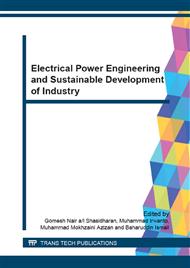p.554
p.559
p.563
p.567
p.573
p.578
p.585
p.590
p.595
The Performance of a Heat Exchanger Designed for Cooling Electric Vehicle Car Battery System by Use Base Fluid and Nano-Fluid
Abstract:
This study examines the design of heat exchanger made of copper tube for cooling electric vehicle car battery system and the effects of base fluid and nanofluid (as coolants) channeling inside the heat exchanger to increase heat transfer between the compartment of the electric vehicle car and the heat exchanger and comparison between them. The nanofluid (CuO/pure water) was prepared by dispersing a nanoparticle (CuO) in base fluid (pure water). nanofluid (CuO/pure water) with a nominal diameter of 50 nm at volume concentrations (0.27 Vol. %) at batteries’ compartment temperature was used for these investigations. The analysis showed that secondary cooling system by means of nanofluid (CuO/pure water) has advantages in improving the thermal conductivity and heat transfer coefficient, better from base fluid (pure water) also in Nusselt number. This results work on reducing the electric power loss in the form of thermal energy from batteries. This led to increase in the efficiency of the electric vehicle car battery, hence also improved the performance of the EV car and battery lifetime.
Info:
Periodical:
Pages:
573-577
Citation:
Online since:
September 2015
Price:
Сopyright:
© 2015 Trans Tech Publications Ltd. All Rights Reserved
Share:
Citation:


